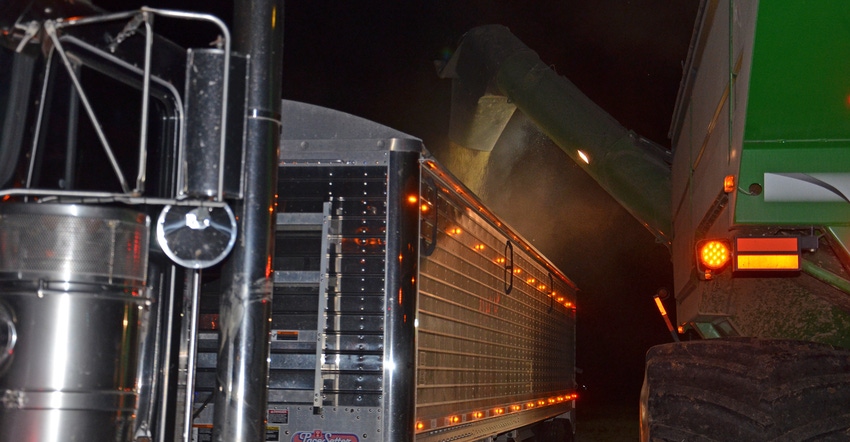
There was a moment in the last days of May when the grower for the Soybean Watch ’21 field stood in a thin spot in the field and wondered if he should add in some more soybeans. After determining that the lowest counts were 70,000 plants per acre and the overall field average was well above 90,000 plants per acre, he decided to leave the field alone. Now he’s glad he did.
The combine told the real story. The 51-acre field averaged just over 66 bushels per acre on a dry basis. It’s not the 75 bushels per acre he hoped for, but it’s far better than the 50-bushel yield, or lower, he feared when the rains stopped for over five weeks at the most crucial time of the season — late July through most of August.
Related: 2 kinds of stinkbug mean double trouble for soybeans
A soil moisture sensor placed 6 inches under the surface in this no-till field confirmed that soil moisture content bottomed out near 11% and held there for several days until rains returned. The late rains helped, but likely not as much as if they had come two weeks earlier.
Overcome challenges
“We found that some pods aborted a bean, and some upper pods on plants that were still putting on pods may have aborted due to the dry weather stress,” observes Steve Gauck, a regional agronomy manager for Beck’s, sponsor of Soybean Watch ’21. “There was definitely more yield potential there if rains had come sooner.”
These soybeans overcame early-season challenges before dry weather stress ever set in. The field was planted May 15, and it rained the following week. It also stayed cool. Some soybeans struggled to emerge due to crusting, but although emergence was slower than normal, most areas of the field finally reached stands that were acceptable.
“We don’t have data on whether delayed emergence affects soybeans like it does corn,” Gauck says. “This might have been an opportunity to find out, but it’s more difficult to flag soybeans and measure yield at the end than it is with corn.”
Tough soils weren’t the only problem young soybeans faced. “We found slugs, even when scouting in June,” Gauck explains. “They’re more of a problem in years with cool, wet soils. In this case, they knocked off some plants, but slug numbers weren’t too high, and feeding wasn’t severe.”
Gauck is comfortable if final stands average 80,000 plants. “You must watch weed control more closely, and this grower took care of weeds,” he says. “If you do that, we’re OK with populations of 80,000, maybe even lower.”
And the thinnest spot where the grower pondered over 70,000 plants per acre early in the season? He checked it the night of harvest. The plants that were there had up to four branches each, loaded with pods. “The soybean’s amazing ability to compensate is what makes the difference,” Gauck says.
About the Author(s)
You May Also Like




